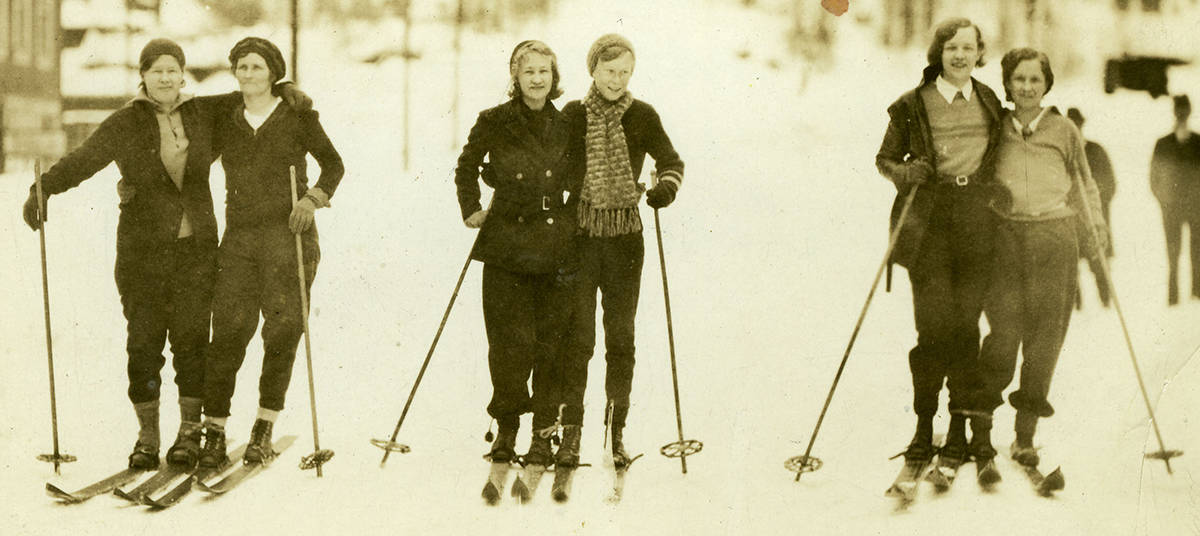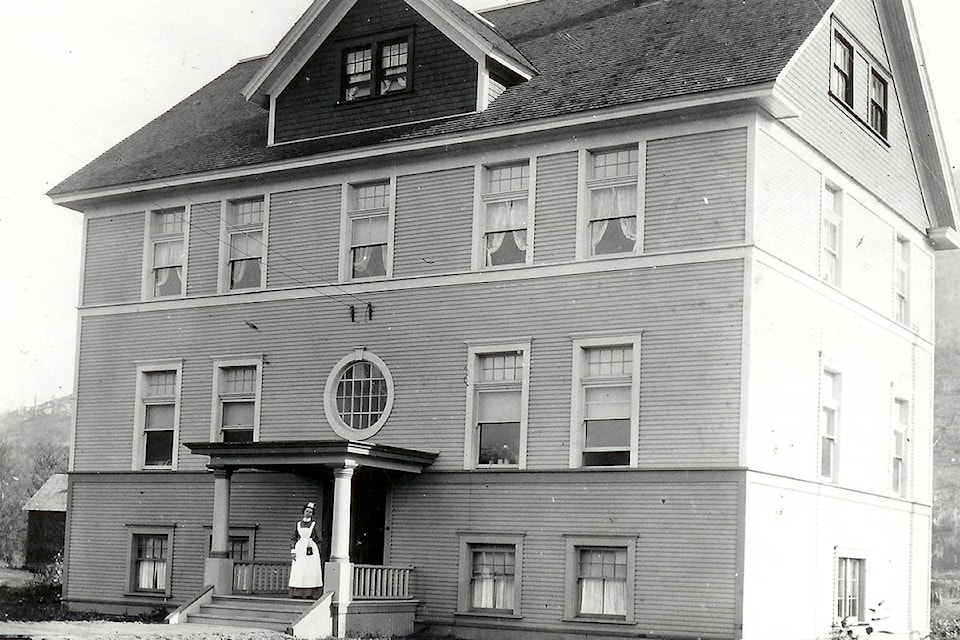Cathy English
Curator of Revelstoke Museum and Archives
Writing a column on Revelstoke’s inspirational women poses an immediate challenge.
There are so many women of influence in Revelstoke, past and present, that the whole column could be just a long list, and it still wouldn’t include everyone.
Another challenge goes back to how history was recorded in the early years of Revelstoke.
The newspapers were written and edited by men – white, British men – and diverse stories were not well represented.
Even early obituaries would seldom list a woman’s first name.
The June 18, 1902 edition of the Revelstoke Herald included this short obituary:
“THE HERALD regrets to announce the death, on Monday evening last, of Mrs. J.W. Jenkins, beloved wife of CPR Engineer Jenkins. The deceased was possessed of many good qualities, and was well and popularly known in Kamloops and Vancouver, as well as in this city.”
The obituary goes on to mention that she gave birth to a son the previous week. It is only through searching online records at the BC Archives that we discover that her name was Alice Maria Jenkins, nee Lawrence, and that she was born in Ontario, and was 27 years old at the time of her death.
This small story also points to the dangers of childbirth at that time, both for the mother and the baby.
Whenever a new organization was formed in Revelstoke, women were generally kept off of the boards, but often did much of the behind-the-scenes work.
The Revelstoke Hospital Society was formed in 1901, and almost immediately the Women’s Hospital Auxiliary was formed.
They took charge of fundraising efforts to build the first hospital, and held pantry and linen showers to make sure that it was well-stocked.
The current hospital auxiliary traces its roots back to the original group. When the first Queen Victoria Hospital opened in 1902, the matron was Elsie Mackinnon, a skilled and highly-trained nurse from Prince Edward Island.
She only worked in this position for less than a year, because in April 1903, she married CPR superintendent Thomas Kilpatrick, who was also president of the hospital board.
Married women could not continue to work, so she was forced to give up her position.
Women had few rights, even over their own lives, the lives of their children, and over their own property.
The women’s suffrage movement of the 1910s was an attempt not only to gain voting rights, but to have the opportunity to influence legislation that affected women and children.
The B.C. Equality League was formed in Vancouver in 1911 to work towards women’s suffrage, and they sent representatives throughout the province to promote the cause.
Florence Lashley Hall visited Revelstoke to encourage local women to join the league.
The editor of the Mail-Herald, in a March 6, 1911, column, doubted that Revelstoke women would choose to be involved, as they “do not take any working interest in either municipal, provincial, or federal politics.”
He was wrong, as Revelstoke women took up the fight, with prominent women such as Jane Sturdy, Jeanne Robbins, Isabel Coursier, Amelia Sibbald and others leading the movement, and forming a local branch of the Equality League in 1912.
Florence Lashley Hall became more involved in the Revelstoke branch of the Equality League when she moved here with her husband, a Methodist minister, from 1913 to 1915.
She wrote a stirring letter to the editor of the Mail-Herald on Nov. 29, 1913:
“Throughout the province, they (women) are asking why? Why is woman’s legal status thus? Why is she a non-entity in the eyes of the law? Why has she no right to her own child? Why these inequalities? These injustices? And she has a perfect right so to query.
“No legislation, no judicial decision can stop her thought, though it may stop her vote. However, she means to know the reason why? And with this in view intelligent women of today are prosecuting an educational campaign and arousing their sex to the need of political emancipation…”
Women gained voting rights in B.C. in 1917, and federally in 1918.
World War I had a major influence on women’s suffrage.
Women had been essential to the war effort, knitting thousands of pairs of socks, sending endless parcels to the soldiers, raising money for supplies and helping to keep their communities functioning when so many men were away.
Groups such as the Women’s Canadian Club and the Red Cross Society worked tirelessly to support the war effort, while also providing women opportunities to learn and expand their horizons through interesting talks by prominent speakers.
When researching Revelstoke’s history, I am always moved by the stories of women who persevered to live their lives and raise their families in difficult circumstances at a time when there were no safety nets, and who worked hard to improve the community and make it a better place for everyone to live.
There was Adeline, a Sinixt woman, whose husband, Jim was shot by a settler at Galena Bay in 1894.
Her account of the shooting was discounted, and the man who shot Jim was acquitted.
There was Catherine Fraser, who came here in 1885 when the town was just being established, and raised her 10 children, and ran the family farm.
There was Isabel Coursier, who became the first woman on the school board, and who was a talented artist.
There were athletes like Anna Gunnarsen, who was a champion ski racer, and Elise, Nanna, Rebekka, and Henrietta Nelsen, the sisters of Nels Nelsen, who all excelled in skiing.
There were talented musicians, such as Sarah Dickey, who played the organ for several local churches, and her daughter Shella, who taught music lessons at a high level in both Revelstoke and Vancouver.
There were historians Mary Daem, Estelle Dickey, Margaret McMahon and Ruby Nobbs who made sure that our history was recorded and preserved, and who were all instrumental in the formation of the museum.
The women who shaped Revelstoke are too many to name, but we all share their legacy, as we all — men, women and children alike — continue to work to make Revelstoke such a vibrant community.
@RevelstokeRevue
editor@revelstoketimesreview.com
Like us on Facebook and follow us on Twitter.

